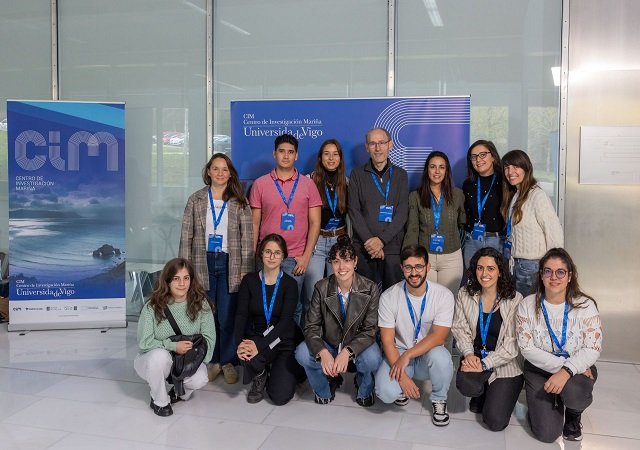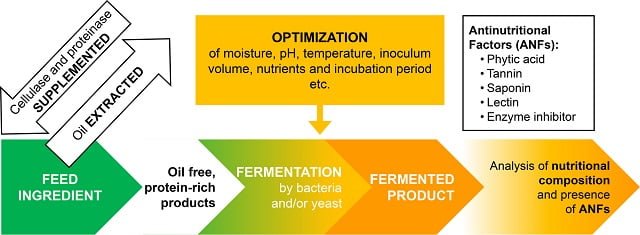
The Fish Physiology group (PhysToFish) of the Centro de Investigación Mariña (CIM) at the University of Vigo, led by professor José Luis Soengas, is leading an innovative European project that will seek to revolutionize aquaculture feed production through innovative biotechnological processes, replacing vegetable proteins with proteins obtained from single-cell fungi through their fermentation with macroalgae waste. The work has been selected for funding – with the amount of 1.23 million euros – within the Blue Bio Resources area of the prestigious Sustainable Blue Economy Partnership (SBEP) call, linked to the EU’s Horizon Europe program, which supports the sustainable blue economy. After a rigorous international evaluation, this proposal, named AlFunFeed, is the only selected proposal led by a Spanish research group.
The consortium also includes the participation of the Galician biotechnology company ODS Protein, represented by Iria Varela, and three other research groups from the Università Politecnica delle Marche (Italy), with Ike Olivotto at the head; the CIIMAR centre (Portugal), through Benjamin Costas; and the University of Thessaly (Greece) under the direction of Kostas Kormas. In addition, it also has the collaboration of the Italian Federation of Fishing and Aquaculture (Federpesca), representing society, and the Galician Innovation Agency (GAIN) and the Regional Ministry of the Sea of the Xunta de Galicia as representatives of the administration.
Experimental diets for European sea bass, extrapolable to other species
Together, they will try to develop experimental diets for the European sea bass (Dicentrarchus labrax), evaluating their impact on feeding, the digestive system, its nutritional value, the effect on microbiota, immune response, and animal welfare. Additionally, the environmental and economic impact of this new protein source will also be analyzed, aligning with the sustainability objectives of the UN Decade of Ocean Science.
This innovative research thus seeks to improve the sustainability of the aquaculture sector by reducing the use of ingredients with a larger carbon footprint in aquaculture feeds, such as vegetable-based proteins like soy, obtained from monocultures on large tracts of land.
In particular, AlFunFeed is committed to a circular economy model by reusing macroalgae discards in the production of these proteins, offering an alternative and nutritious ingredient for the feed of carnivorous species like the European sea bass, of great commercial importance, which will be extrapolable to other relevant fish species in aquaculture such as turbot, sea bream, salmon, etc.
The CIM researcher and project leader, José Luis Soengas, explains that “in aquaculture, one of the main challenges lies in the sustainability of the ingredients used to make feeds. Our project starts from an innovative idea: to use macroalgae waste —which is normally discarded— as a substrate to grow filamentous fungi and obtain single-cell protein from them. This protein will be the ingredient we will evaluate as an alternative in fish feed.”
Innovative approach for a more sustainable aquaculture
The SBEP evaluation highlighted the scientific and methodological quality of the project, as well as its potential impact on the sustainability of aquaculture. Furthermore, it emphasized the multidisciplinary approach of the consortium, which involves researchers from various academic institutions, industry, and environmental and governmental entities from all over Europe. “It is the first time that the use of these proteins in aquaculture has been proposed using algae as a substrate for their production,” explains Soengas, insisting that it is “a completely new proposal, originating from the CIM, and in a highly competitive European call.”
The coordination of the project by one of the CIM’s groups reinforces the presence of this research center of the University of Vigo in high-level European initiatives and strengthens its position in leading applied research projects for the marine sector, which reaffirms its role as a benchmark in marine research and its commitment to developing innovative solutions for a sustainable blue economy.
Stay Always Informed
Join our communities to instantly receive the most important news, reports, and analysis from the aquaculture industry.
Until August 2028
Approved in the Sustainable Blue Economy Partnership (SBEP) call, the proposal is pending funding from the delegated national bodies, specifically in the case of the Spanish partners, the State Research Agency (AEI) and the Center for Technological Development and Innovation (CDTI). The project is expected to start next September and last for three years – until August 2028.
“The first step will be to adapt the existing fermentation technology of the single-cell fungi so that algae can be used as a substrate. This part will be developed by the consortium’s company (ODS Protein). From there, ‘we will take on the task of studying whether this new protein meets the needs of the fish,’” explains Soengas.
From the point of view of its promoters, the results of the AlFunFeed project could transform the aquaculture sector by introducing a more sustainable and efficient protein source compared to the vegetable-based protein ingredients routinely used today by the feed industry. The use of single-cell protein derived from fungi grown on macroalgae waste would allow for the replacement of vegetable proteins in commercial feeds, reducing competition with crops intended for human consumption. Furthermore, this alternative would contribute to reducing the process’s carbon footprint, improve the health and welfare of the fish, and ensure greater stability in the supply of ingredients by avoiding seasonal or extractive resources.
Editor at the digital magazine AquaHoy. He holds a degree in Aquaculture Biology from the National University of Santa (UNS) and a Master’s degree in Science and Innovation Management from the Polytechnic University of Valencia, with postgraduate diplomas in Business Innovation and Innovation Management. He possesses extensive experience in the aquaculture and fisheries sector, having led the Fisheries Innovation Unit of the National Program for Innovation in Fisheries and Aquaculture (PNIPA). He has served as a senior consultant in technology watch, an innovation project formulator and advisor, and a lecturer at UNS. He is a member of the Peruvian College of Biologists and was recognized by the World Aquaculture Society (WAS) in 2016 for his contribution to aquaculture.




